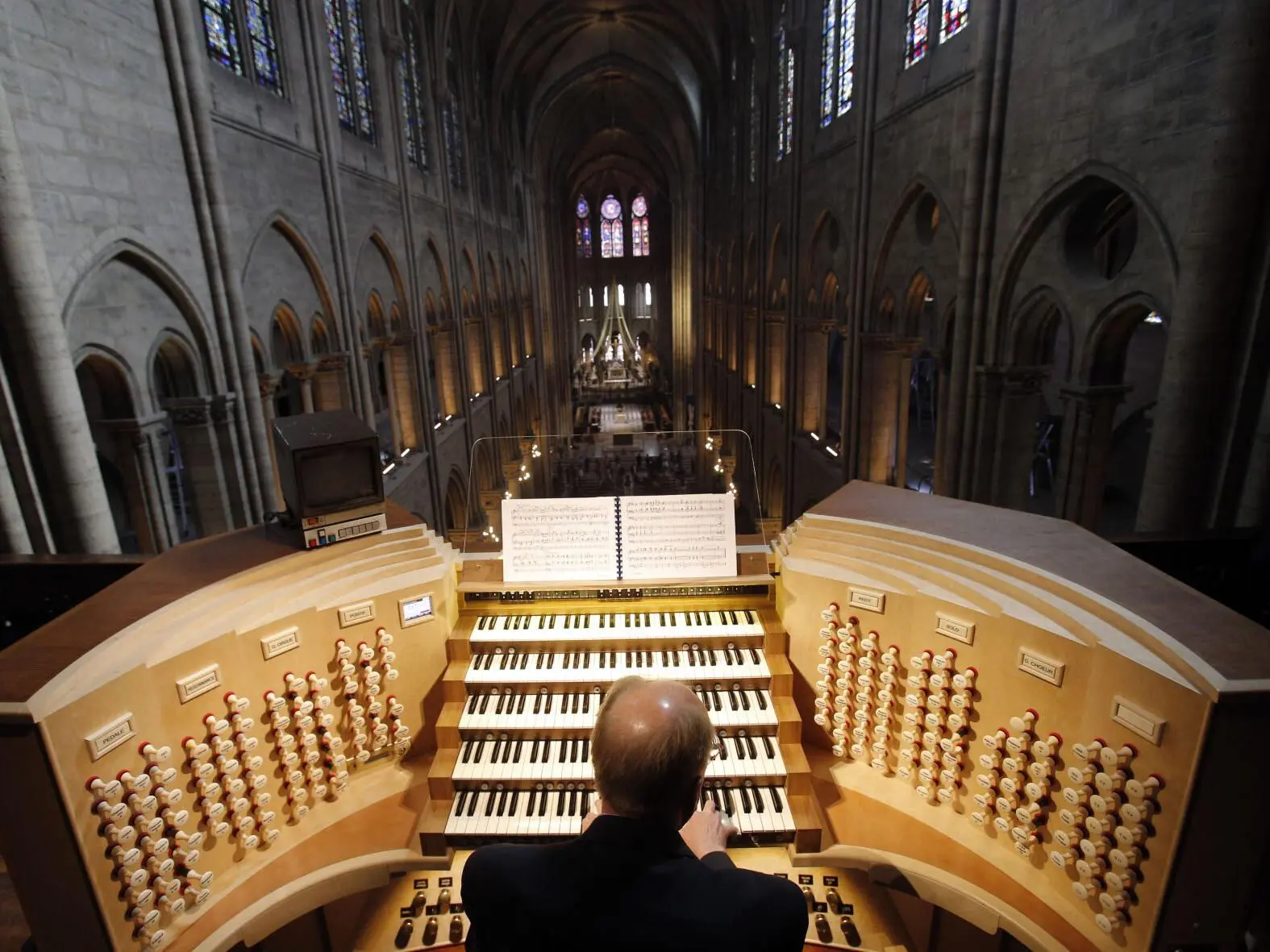Paris's Notre Dame Cathedral is on track to reopen later this year after the devastating 2019 fire. But what about the Great Organ? How damaged was it? When will it be restored to the cathedral?
Monday 15 April marked five whole years since the devastating fire at Paris’s Notre Dame Cathedral that caught the attention of the world.
On that fateful day, just before 18:20 CEST, a fire broke out in the roof space of the cathedral. By the time the fire was extinguished, most of the roof was destroyed and the iconic iconic 165-year-old spire which was seen tumbling down in a ball of flames.

The Notre Dame Cathedral spire engulfed in flames in April 2019. ©Levrier Guillaume
Restoration has been ongoing ever since that day, with around 250 companies all involved in the momentous task of returning the beloved cathedral to its original state. Officials say the cathedral is on track to reopen to the public in December 2024.
Many of you may remember that incredibly the Great Organ was saved from any permanent damage. At the time Bertrand Cattiaux, an organ restorer that takes care of the upkeep of the invaluable piece, stated the organ, "did not suffer from the fire, that it was damaged by water infiltration from fire hoses, but not catastrophically."
The news touched the hearts of millions around the world. One American organist, Peter Krasinki, was so touched that he organised an event to raise funds for the restoration of the organ.
What condition did the fire leave the Great Organ in?
Miraculously, the cathedral’s great organ was left undamaged, aside from a small amount of water damage in one of its pipes and a rather large coating of lead dust.
What work is required to return the organ to its original state?
About a year and a half after the fire, the organ was sent for restoration work which is still ongoing.
Each and every piece of the organ is dismantled and stored in separate containers, with each piece needing to be individually cleaned and decontaminated. This process also involves replacing the leather inside the organ’s body and pipes. Yes, leather! This material helps direct the air flow inside the organ.

The stunning pipes of the Great Organ
Once the restoration is complete, it will take another six months or so of harmonisation before its 8,000 pipes recover their full sound potential. This is an impeccably precise process as each note has to be tuned to the specific environment of the Notre Dame cathedral.
It is expected that the organ will sound noticeably different once it is restored to the cathedral due to the change in dynamics and structure as a result of the fire.
A brief history of the Great Organ
This organ is a remarkable piece of work. With five keyboards, 115 stops and just shy of 8,000 pipes, it is one of the world’s largest organs. In fact, it was the world’s largest until Jean-Baptiste-Nicolas Lefebvre completed the monumental organ in the Basilica of St. Martin of Tours.

The Great Organ of Notre Dame. ©Friends of Notre Dame Paris
The earliest known organ within the cathedral was built by Friedrich Schambantz back in 1403. A huge renovation took place in the 1730s, in which another organ builder, Francois Thierry, reworked Schambantz's organ. The current organ was built in 1868 by French organ builder Aristide Cavaille-Coll. Much of the pipework from the former instruments were included in his design.
The survival of the Great Organ is remarkable given just how much damage was done to the Cathedral. We look forward to the day when its glorious sounds can be heard reverberating around the Cathedral again.







